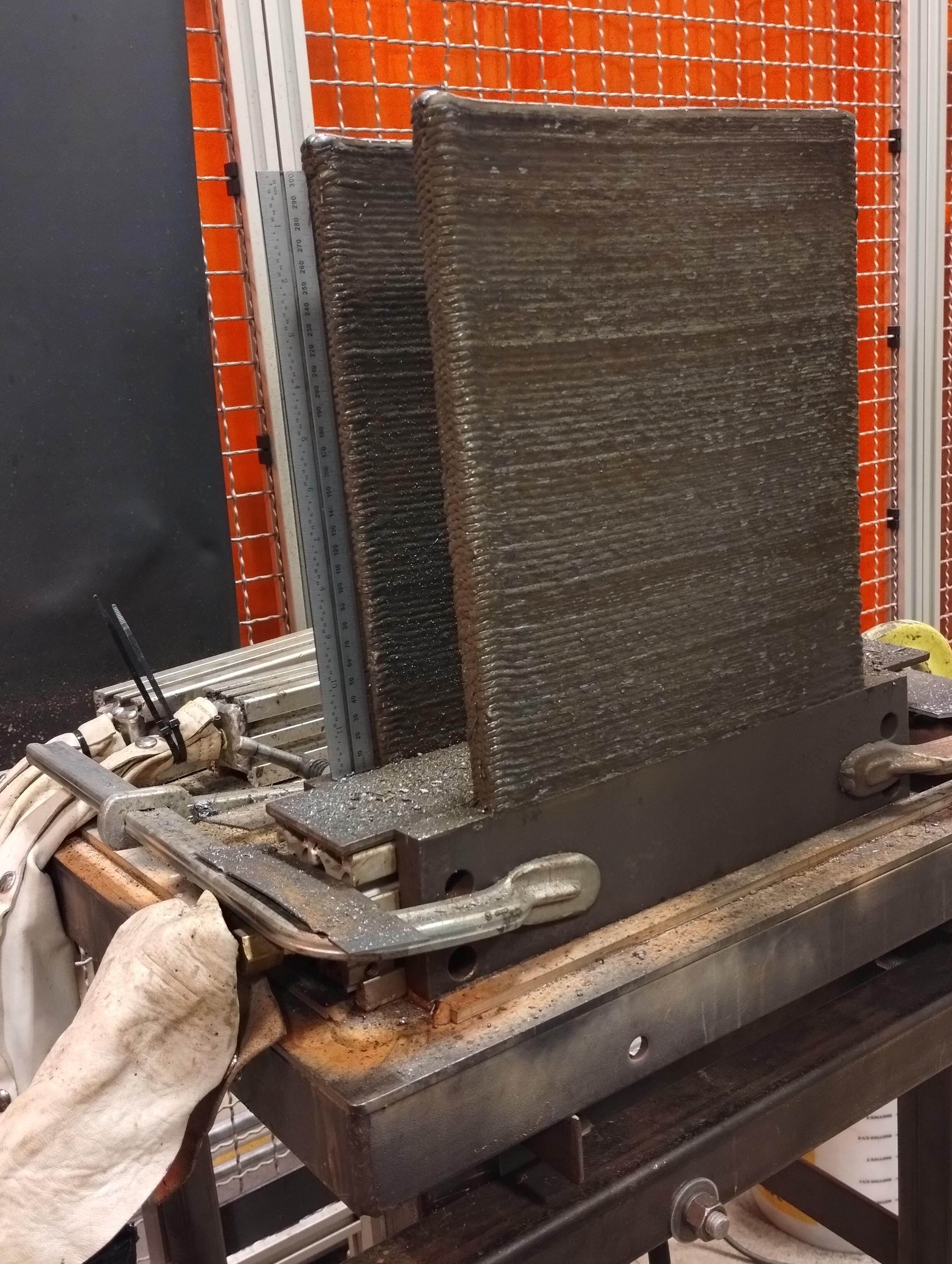Students and faculty from Conestoga’s School of Engineering & Technology have contributed to a major research program to enhance the resiliency of structures subjected to seismic events, including earthquakes.

WAAM Steel test walls printed in Conestoga’s Welding Robotics Lab for researchers at UBC ASSET.
The Advanced Structural Simulation & Experimental Testing (ASSET) Group at the University of British Columbia (UBC) is developing and improving high-value energy-dissipating devices that can be used in buildings and other structures. These specially designed steel components act as shock absorbers and can help to avoid catastrophic structural failures, such as fractures and collapses. The Conestoga team was asked to use Wire Arc Additive Manufacturing (WAAM) techniques to support the program.
Through applied research, the Conestoga team has developed a process to produce large-format components in steel and other alloys by using arc-welding robots as large 3-D printers of metal objects. Previous research has demonstrated that steel alloys produced by the team’s WAAM method can have equivalent strength to standard structural steels with the added benefit of superior ductility and toughness.
To support ASSET’s research, students from Conestoga’s Welding Engineering Technology - Inspection and Manufacturing Engineering Technology - Welding and Robotics programs produced test material of WAAM steel custom printed to specifications.
“The research team at UBC is particularly interested in the ductility and toughness properties of this WAAM printed steel, which would play a critical role in absorbing seismic energy,” said Conestoga professor Dr. Tam Nguyen. “All steels behave in an elastic-plastic manner when subjected to stress; however, due to the nature of the WAAM printing process, the steel objects manufactured this way appear to have exceptionally good energy absorbing properties, especially at low temperatures when many steel alloys become brittle.”
Researchers at ASSET are extracting test samples from the steel components and will then evaluate the material’s performance in simulated earthquake conditions (low-cycle fatigue testing). The WAAM steel properties will be compared to traditionally manufactured components currently produced as metal castings. The WAAM process can be an alternative to casting parts if low-volume or rapidly manufactured replacement components are required.
The research at UBC’s ASSET hopes to produce full-scale steel components and demonstrate that additive-manufactured steel has the potential to enhance the performance of energy-dissipating devices. In addition to active applied research at Conestoga into various aspects of this new process, the college’s WAAM-produced steel is now being studied by researchers at three Canadian universities. The University of Waterloo is currently testing fracture toughness and other critical mechanical properties of WAAM steel and McMaster University is studying the machinability and corrosion resistance of this material compared to standard alloys.
The college works in collaboration with industry, community and government partners to deliver innovative solutions to address real-world challenges. Conestoga is ranked among Canada’s top-tier research colleges, supporting the needs of industry and community partners while providing students with opportunities to build real-world skills. Visit Conestoga Applied Research and Innovation for more information.
